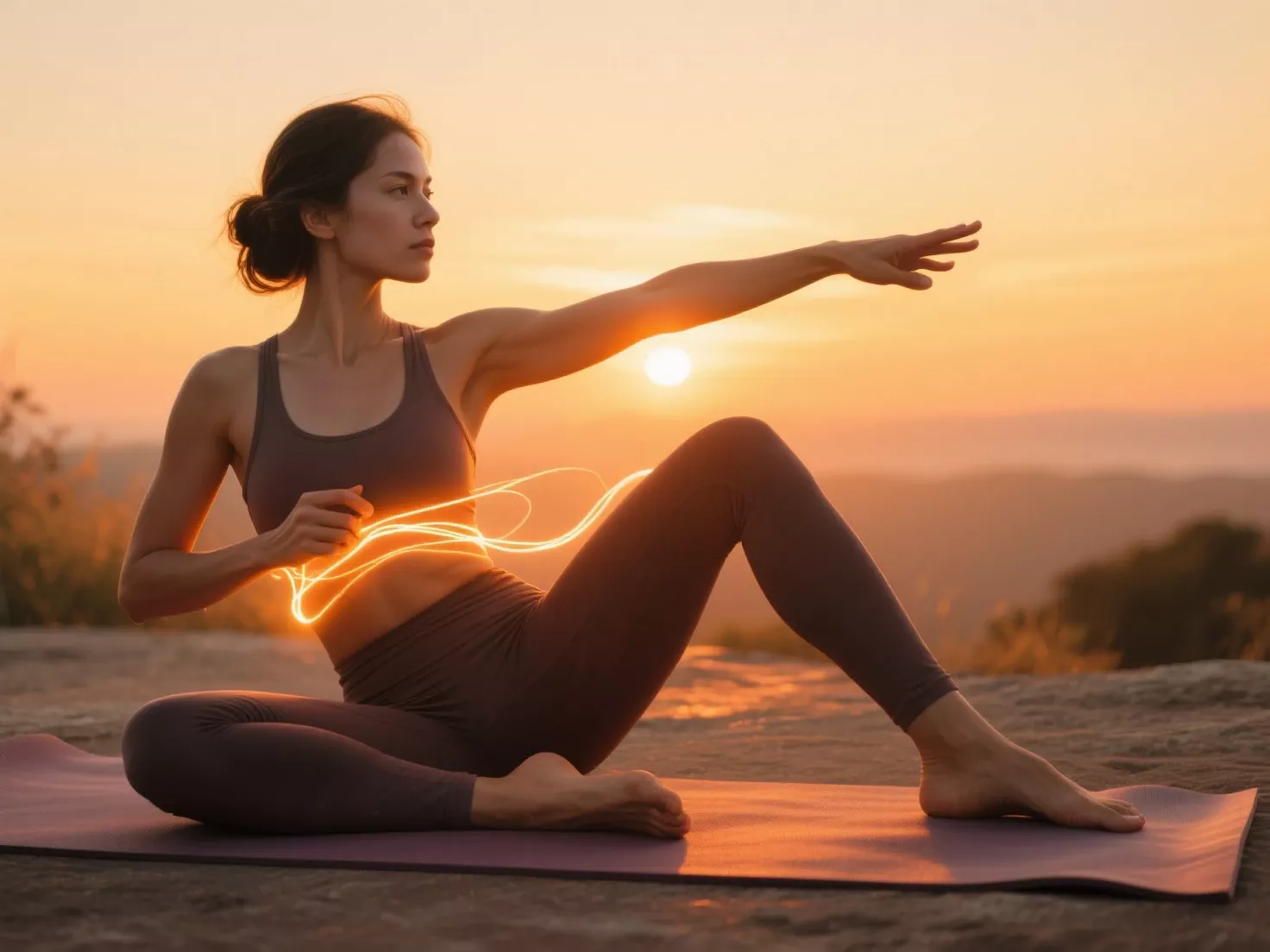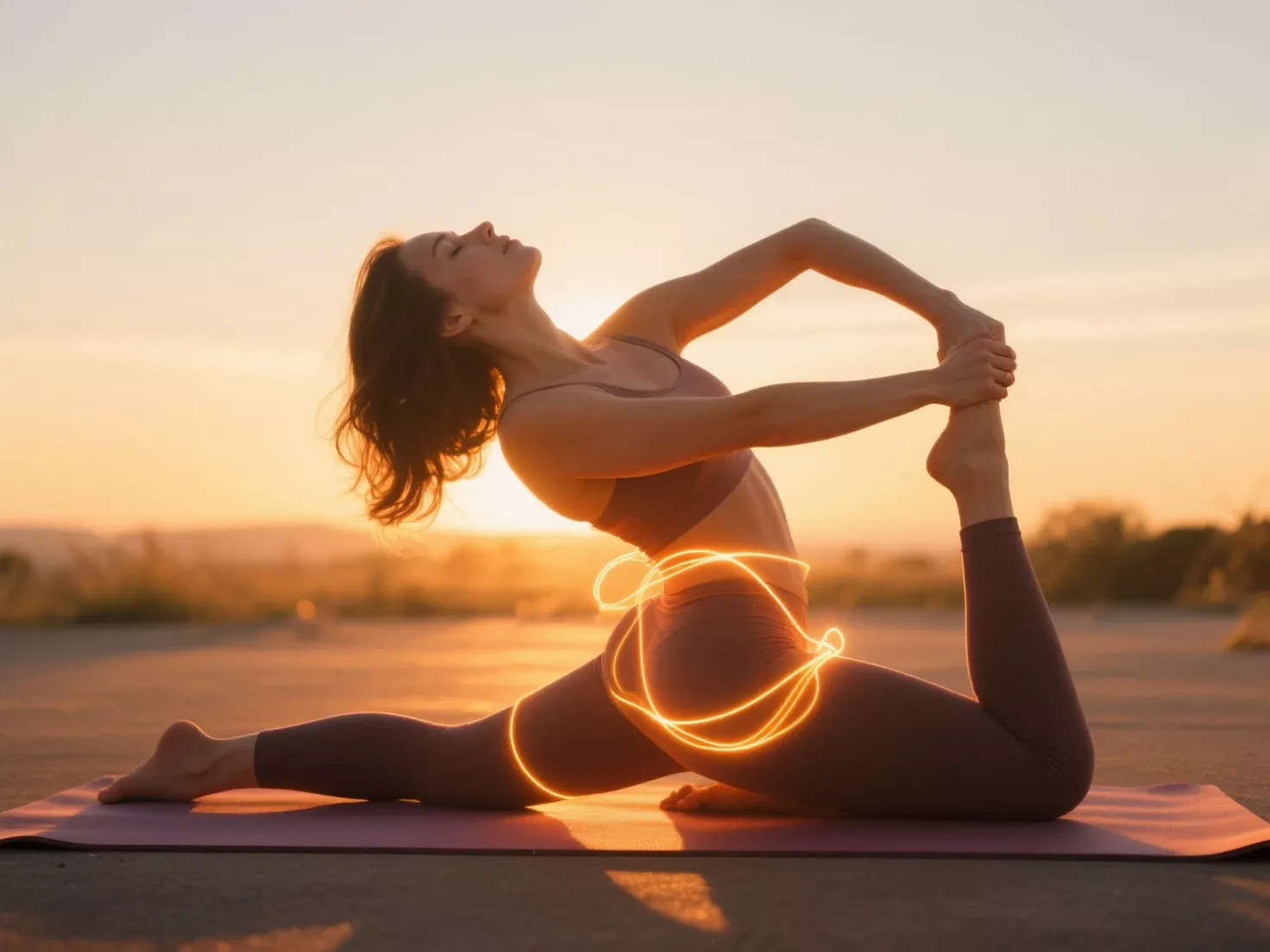Yoga, as both a physical and spiritual discipline, holds space for many iconic poses—each reflecting deeper symbolic meaning while delivering holistic health benefits.
Among these, Archer Pose or Akarna Dhanurasana in Sanskrit—stands out as a unique blend of strength, focus, and flexibility.
A powerful seated posture, Archer Pose mimics the stance of a warrior drawing back the string of a bow.
While less commonly practiced than more familiar poses like Downward Dog or Warrior II, Akarna Dhanurasana is steeped in tradition and offers a rich array of benefits for both body and mind.

In this ultimate guide, we’ll explore:
-
The origins and symbolism of the Archer Pose
-
How to perform the pose step by step
-
Variations for different levels
-
Benefits and contraindications
-
Common mistakes and how to fix them
-
How Archer Pose is used in different yoga traditions (like Kundalini Yoga)
-
FAQs and advanced tips
Let’s aim true and dive in.
📜 Origin and Meaning of Akarna Dhanurasana
Sanskrit Breakdown:
-
Akarna = “Near the ear”
-
Dhanur = “Bow”
-
Asana = “Pose”
The name “Akarna Dhanurasana” literally translates to “the pose of drawing a bow to the ear”, illustrating the archer’s physical motion. It symbolizes clarity of purpose, targeted focus, and harnessing inner strength—hallmarks of the yogic warrior.

This pose has its roots in ancient Hatha Yoga texts, and in yogic philosophy, it’s associated with manipura chakra (solar plexus)—the center of personal power and will.
🧘 How to Do Archer Pose: Step-by-Step Instructions
🪷 Preparation:
Before attempting this pose, warm up with hamstring stretches, hip openers, and seated forward folds to prevent muscle strain.
Step-by-Step Instructions:
-
Start in Dandasana (Staff Pose)
Sit on the mat with your legs stretched straight ahead, spine upright, and shoulders relaxed. -
Grab Your Toe
Reach forward with your right hand, and grasp the right big toe (or use a strap if needed). -
Draw the Foot Upward
Inhale and begin drawing the foot toward your right ear, mimicking the action of pulling a bowstring. Keep your elbow wide and shoulder relaxed. -
Extend the Other Arm or Anchor the Leg
Keep the left leg extended on the mat, toes pointing up. Optionally, place the left hand on the floor for support. -
Engage and Align
Keep the back tall, chest lifted, and shoulders square. Don’t slouch or collapse into the spine. -
Hold the Pose
Remain here for 5–8 slow breaths, keeping your breath even and steady. -
Release Gently
Exhale slowly and release the foot. Switch sides.
✅ Tips for Proper Alignment:
-
Keep the spine long and upright—not hunched or rounded.
-
Flex the extended leg’s foot to stay grounded.
-
Don’t force the foot all the way to the ear—honor your current flexibility.
🧩 Anatomy of Archer Pose: Muscles Worked
| Body Part | Muscle Group Engaged or Stretched |
|---|---|
| Hamstrings | Stretched (extended leg) |
| Hips and Glutes | Engaged and lengthened (bent leg) |
| Shoulders and Deltoids | Engaged for holding and drawing the foot |
| Core and Abdominals | Activated to stabilize the spine |
| Arms and Biceps | Strengthened during the pull |
🧠 Mental and Symbolic Benefits
-
Focus and determination: The act of pulling the bow sharpens mental clarity.
-
Energy direction: Enhances the intention behind your actions.
-
Willpower: Aids in building self-discipline and emotional resilience.
🧘 Variations of Archer Pose
1. Beginner-Friendly Version (With Strap)
-
Use a yoga strap looped around the foot to gently draw it upward.
-
Keep the spine upright using a wall for support.
2. Standing Archer Pose (Kundalini Yoga)
-
Involves a lunging stance with arms extended like an archer.
-
Builds stamina, confidence, and mental strength.
3. Reclined Archer Pose (Restorative)
-
Lying on your back, draw one knee toward the chest and stretch the opposite leg.
-
Used in Yin or Restorative practices for gentle hip release.
⚠️ Contraindications and Safety Tips
Avoid or modify the pose if you have:
-
Herniated discs or lower back pain
-
Hamstring or groin injuries
-
Knee joint sensitivity or surgery history
-
Difficulty maintaining spinal alignment
Safety Tips:
-
Always warm up first.
-
Don’t yank the foot—move mindfully.
-
Use props to support your range of motion.
⚖️ Pros and Cons of Archer Pose
| Pros | Cons |
|---|---|
| Deep hamstring and hip stretch | Can be difficult for beginners with tight hamstrings |
| Develops focus, strength, and balance | Risk of over-pulling and straining muscles |
| Builds core and shoulder strength | Not suitable during pregnancy or acute back issues |
| Symbolically powerful and meditative | Requires prior flexibility and proper technique |
🔮 Kundalini Yoga & Archer Pose (Standing Variation)
In Kundalini Yoga, Archer Pose is practiced standing and often held for several minutes to activate the third chakra, responsible for confidence and action.
How to Perform the Kundalini Version:
-
Step into a Lunge: Right foot forward, left foot back.
-
Extend Right Arm Forward: Palm facing down.
-
Pull Left Arm Back: As if drawing a bowstring.
-
Gaze: Focus over the right fingertips.
-
Engage Muscles: Tighten thighs, core, and shoulders.
-
Hold for 1–3 minutes, then switch sides.
This variation is used in energy-clearing kriyas, warrior meditations, and discipline-enhancing practices.
📊 Yoga Program Idea: Integrating Archer Pose
7-Day Sequence for Strength & Focus (10–20 min/day)
| Day | Focus | Yoga Elements |
|---|---|---|
| Day 1 | Hamstring & hip openers | Forward folds, Butterfly, Supine twist |
| Day 2 | Core stability | Boat Pose, Plank, Bridge |
| Day 3 | Shoulder strength | Dolphin Pose, Downward Dog, Archer Pose |
| Day 4 | Standing balance | Warrior III, Tree Pose |
| Day 5 | Archer Flow | Seated + Standing Archer, Breath of Fire |
| Day 6 | Restorative reset | Reclined Archer, Legs-Up-the-Wall |
| Day 7 | Integration & reflection | Full sequence + journaling prompt |
🌍 Real-Life Applications: When to Use Archer Pose
-
Before exams or presentations to calm nerves and focus.
-
In the morning to set an intention for the day.
-
After work to reset mental clarity and stretch tight hips.
-
During a Kundalini kriya focused on confidence and willpower.
🙋 8 Frequently Asked Questions (FAQs)
1. Is Archer Pose good for beginners?
It can be, with props or modifications like straps and wall support.
2. What does Archer Pose help with?
It strengthens the legs, arms, and core while enhancing focus and flexibility.
3. Can I do Archer Pose during pregnancy?
No, it’s not recommended due to abdominal and hip compression.
4. What chakras are activated in Archer Pose?
Primarily Manipura (solar plexus) and Ajna (third eye) in advanced meditative versions.
5. How long should I hold the pose?
Hold for 30 seconds to 1 minute on each side, depending on your comfort and control.
6. Is there a standing version of Archer Pose?
Yes—used in Kundalini Yoga, with arms extended and one leg forward in a lunge.
7. Can Archer Pose help relieve stress?
Yes. It focuses your breath, activates endorphins, and grounds nervous energy.
8. What are some yoga poses to prep for Archer Pose?
Seated forward folds, Reclined Big Toe Pose (Supta Padangusthasana), and Warrior II.
🧘♀️ Conclusion: Embrace Your Inner Archer
Archer Pose is more than a yoga posture — it’s a call to sharpen your intention and take aim at your goals.
Whether you practice the seated or standing version, the symbolism of the archer draws you into a deeper relationship with your mind, body, and breath.
With consistency, Archer Pose will help:
-
Improve your posture
-
Enhance your muscular control
-
Center your thoughts
-
And unlock your personal power



